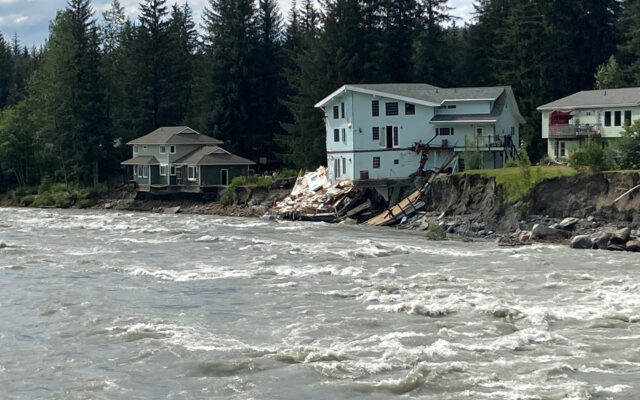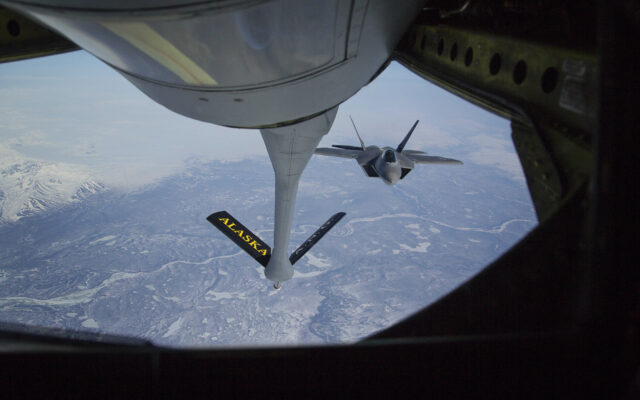Glacial dam outburst in Alaska’s capital erodes riverbanks, destroys at least 2 buildings

JUNEAU, Alaska (AP) — Raging waters that ate away at riverbanks, destroyed at least two buildings and undermined others were receding Monday in Alaska’s capital city after a glacial dam outburst last weekend, authorities said.
Levels along the Mendenhall River had started falling by Sunday but the city said river banks remained unstable. Onlookers gathered on a bridge over the river and along the banks of swollen Mendenhall Lake to take photos and videos Sunday. A home was propped precariously along the eroded river bank as milky-colored water whisked past.
There were no reports of any injuries or deaths. The city said it was working to assess damages.
Such floods occur when glaciers melt and pour massive amounts of water into nearby lakes. A study released earlier this year found such floods pose a risk to about 15 million people worldwide, more than half of them in India, Pakistan, Peru and China.
Suicide Basin — a side basin of the Mendenhall Glacier — has released water that has caused sporadic flooding along the Mendenhall Lake and Mendenhall River since 2011, according to the National Weather Service. However, the maximum water level in the lake on Saturday night exceeded the previous record flood stage set in July 2016, the weather service reported.
Water in the basin comes from sources such as rain and snowmelt and melt from the nearby Suicide Glacier, said Eran Hood, a University of Alaska Southeast professor of environmental science.
Nicole Ferrin, a warning coordination meteorologist with the National Weather Service, said that while it’s not uncommon for these types of outburst floods to happen, this one was extreme.
“The amount of erosion that happened from the fast moving water was unprecedented,” she said.
Water levels crested late Saturday night. Video posted on social media showed a home teetering at the edge of the riverbank collapsing into the river.
The Mendenhall Glacier in Juneau attracts hundreds of thousands of visitors each year but the awe-inspiring glacier continues to recede amid global warming.
You Might Also Like



